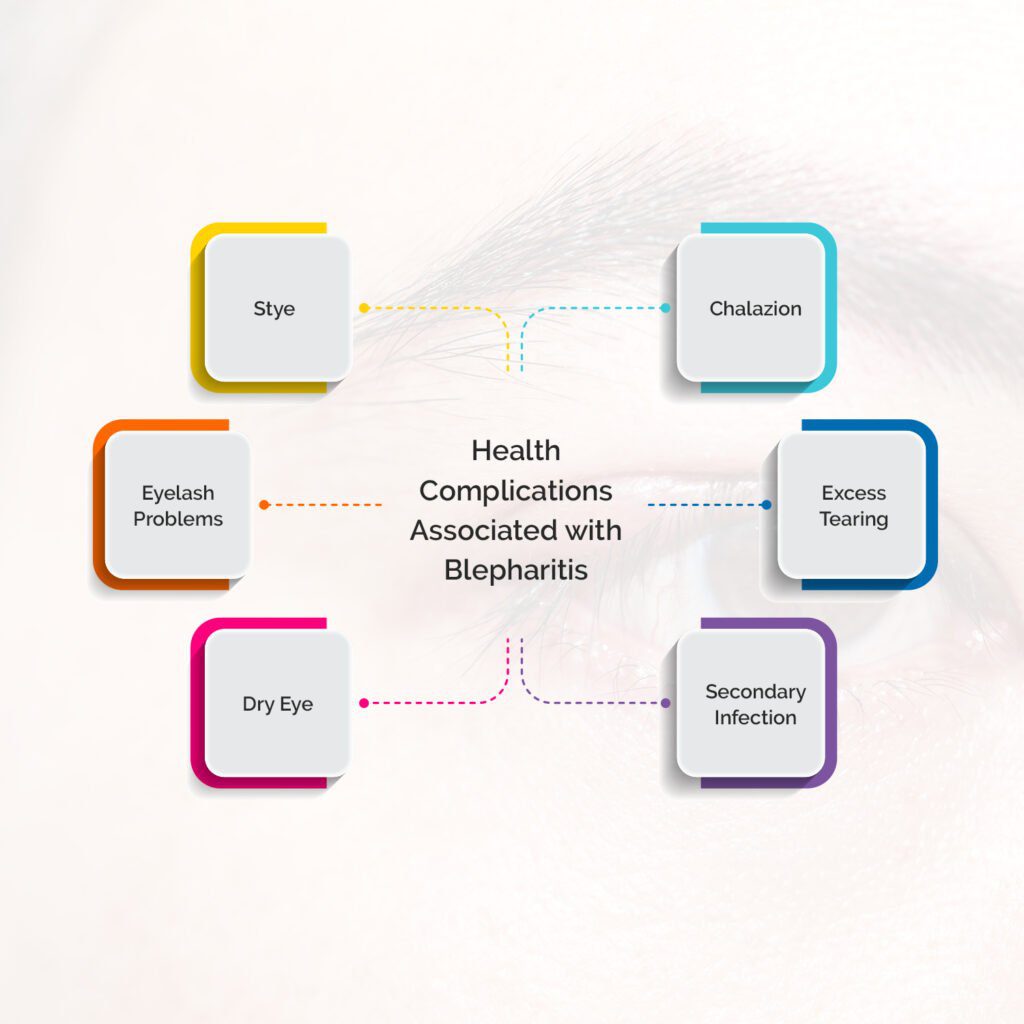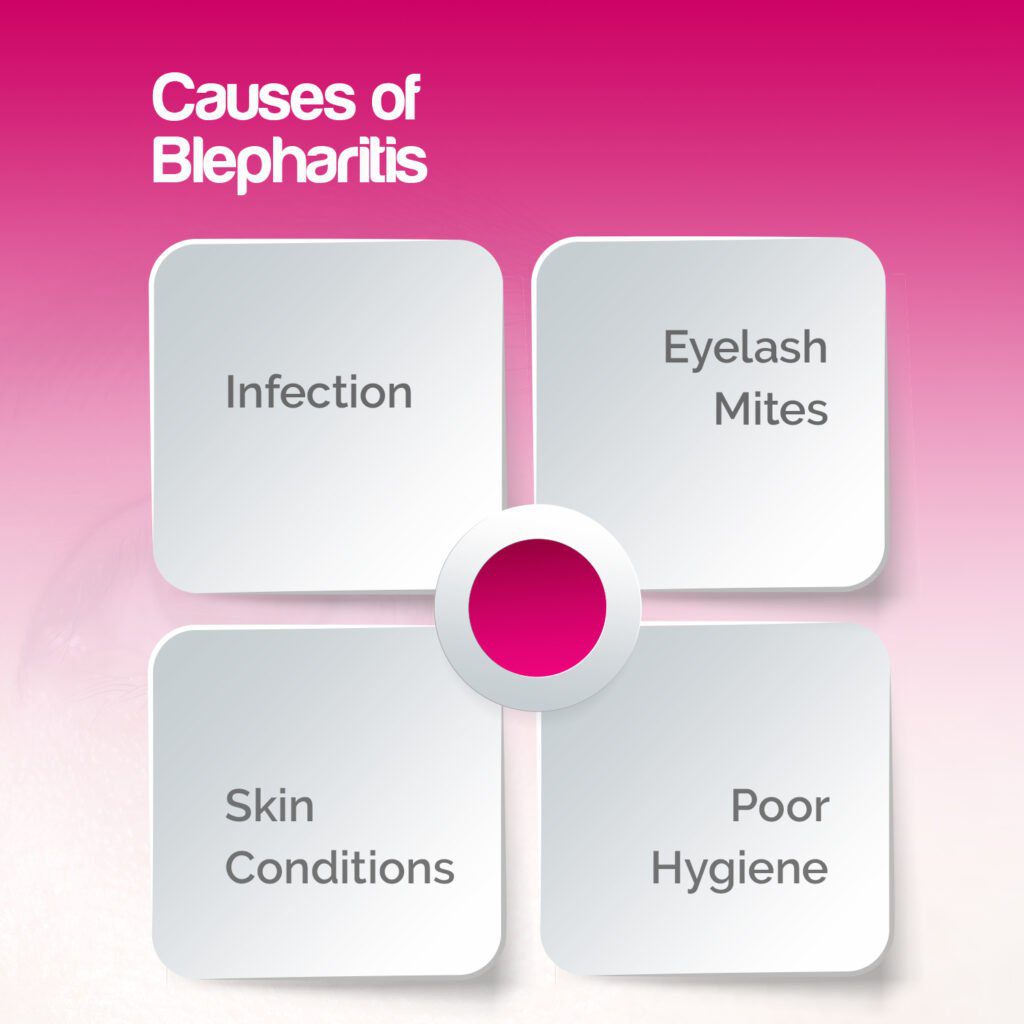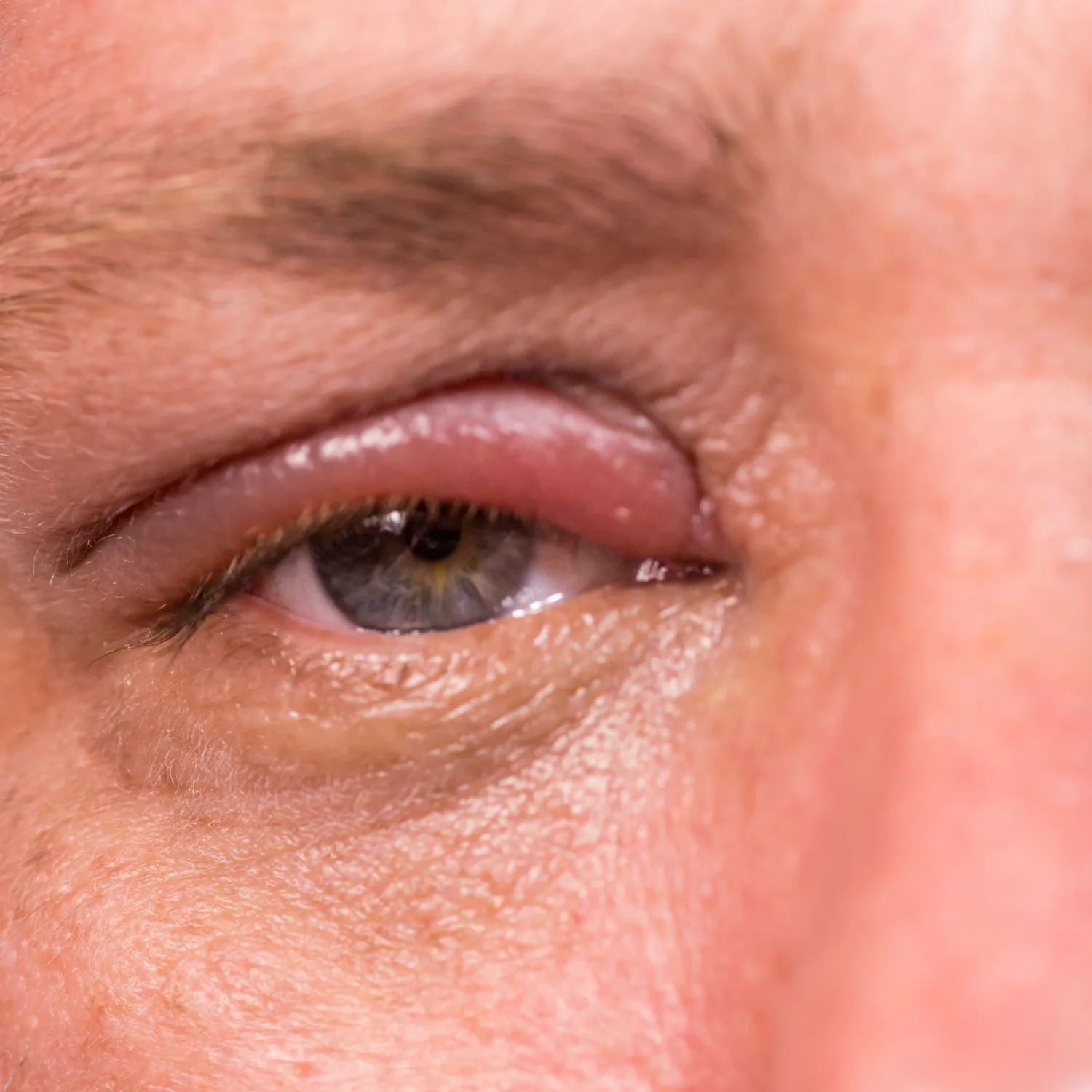


There are various straightforward ways to prevent blepharitis. However, if you have already developed the condition, there are natural remedies for blepharitis that will help address the root of the problem and improve the symptoms.
Table of Contents
Blepharitis is an eye disorder that is very common among people. A series of factors that result in inflammation of the crusty eyelashes and eyelids can lead to blepharitis. Unfortunately, most people consider this eye condition the most underappreciated, undertreated, and under-diagnosed eye disease globally.
In this article, you will learn the following from this content:
What is Blepharitis?
Blepharitis is a common eye disorder that inflames the eyelid and makes it swollen. In addition, the condition can be itchy, irritating, and painful. In some people, blepharitis can result in more severe symptoms such as inflammation of the eye tissue and blurred vision.
There are often bacteria on the surface of our skin, and it thrives at the base of the eyelashes in the case of some people. This can result in inflammation, irritation, and other symptoms of blepharitis.
There are two types of blepharitis:
Anterior blepharitis
This affects the eyelid’s front, and outside area, the exact spot your eyelashes are attached to. Dandruff, bacteria, or mites that spread to the eye can cause anterior blepharitis.
Posterior blepharitis
This covenant affects the inner eyelid, the spot where the lid makes contact with the eye. The condition is commonly associated with meibomian gland dysfunction; this refers to an issue with the tiny oil glands that line the margin of the eyelids that connect when the eyes are closed. When the glands are not secreting sufficient oil due to plugging, they can become crusty and lead to irritation.
It is essential to know that natural remedies for blepharitis can tackle any of its symptoms.
Signs and Symptoms of Blepharitis
The symptoms associated with blepharitis can vary according to the condition’s type, cause, and severity. The following are the most common symptoms of blepharitis:
- inflammation of the eye tissue (such as the cornea)
- hard crusts around the eyelashes
- scales or flakes around the base of the eyelashes
- sticking eyelids
- missing eyelashes
- blurred vision
- red eyes
- irritation
- tearing
- burning, watery or stinging eyes
- flakes that look like dandruff appear on the eyelashes and eyelids
- eyelid thickening or swelling
- having the feeling that there is something in your eye
- tears that have bubbles or foams in them
- waking up with crusty eyelashes
These symptoms do not mean that you have blepharitis. To be sure, you need to make an appointment with your ophthalmologist for a complete eye exam, most especially if you are suffering from more than one of the symptoms. In this situation, you should consult your physician before considering the natural remedies for blepharitis.
Health Complications Associated with Blepharitis

The health conditions that can result from having blepharitis include the following:
1. Stye
When the glands along your eyelids become infected and clogged, then stye form. A stye is a small, red lump around the eye and on the eyelid. It is usually itchy and painful. A stye is often a result of an acute infection of the oil glands present in the eyelids. Therefore, to get rid of a stye, you have to kill the bacteria that have infected the area.
2. Chalazion
A chalazion is a lot like a stye because it is also caused by inflammation of the eyelid’s oil glands, leading to a red lump on the eyelid. The slight difference between a chalazion and a stye is that a chalazion is often painless. A chalazion also tends to be larger than a stye – it can look like a small bead in your eyelid.
3. Eyelash problems
When blepharitis has been left untreated for long, it can result in misdirected eyelashes – this means that the eyelashes can grow abnormally and eventually fall out.
4. Excess tearing
The irregular oil secretions that result from flakes or debris accumulating in the tear film can cause excess tearing.
5. Dry eye
Abnormality with the meibomian glands can result in decreased oil secretions, and this can negatively affect the amount of oil in your tears, leading to a dry eye in the process.
6. Secondary infection
You can cause a secondary infection in your eyelids by rubbing and touching the infected area; this is because this act can quickly spread bacteria. When your eyelids are infected, it is best to avoid rubbing or touching your eyes, especially if your hands are not entirely clean.
Causes of Blepharitis

Blepharitis can result from a parasite, fungi, dandruff, bacteria, an infection, or a skin condition. It is the presence of these toxins that change the healthy environment of the eyelid. They are also responsible for producing free radicals and pro-inflammatory cytokines.
1. Infection
Blepharitis can be a result of bacterial infection. Having some bacteria on the skin is normal, but excessive bacteria can pose a severe challenge.
2. Eyelash Mites
Demodex, an eyelash mite, is a common cause of blepharitis among older adults. Mites often stay on eyelashes, and they do not always cause a problem. However, in some cases, the mites can develop at the base of the eyelashes. This buildup of mites can irritate the skin around the rim of the eyelashes, resulting in flakes, irritation, and redness.
3. Skin Conditions
Certain dermatological conditions can result in blepharitis. These conditions may be any of the following:
- Contact dermatitis: a condition where the skin becomes inflamed and irritated because of direct contact with an allergen or chemical irritant
- Acne rosacea: this is a condition that makes the skin on the face irritated and red
- Eczema called seborrheic dermatitis
4. Poor Hygiene
Bacteria breed and live on the skin. The bacteria can multiply if you don’t wash the eyelids often enough. The multiplication can result in an overgrowth of bacteria that can irritate the eyelid skin. Therefore, you must clean your skin with soap and water regularly to keep the levels of bacteria low.
Natural Remedies for Blepharitis
Blepharitis may be pretty irritated and troublesome; it can even be worse and profoundly affect your vision. Therefore, it is advisable to seek a remedy as soon as you are diagnosed with eyelid inflammation. The following natural remedies for blepharitis can help treat the condition:
1. Tea Tree Oil
One of the most effective essential oils you can use to treat blepharitis is tea tree oil. The root cause of inflammation of the eyelid can be eliminated by tea tree oil’s excellent antibacterial and anti-inflammatory properties. In addition, this superb oil can work as a machine to get rid of ocular Demodex and improve visual symptoms.
How to use
Mix some carrier oils (such as coconut oil or olive oil) with some drops of tea tree oil. Gently rub the mixture on your closed eyelids by scooping it with a cotton ball. Allow it to remain there for about 5 – 10 minutes and repeat the procedure 2 – 3 times each day until you discover some improvement.
2. Aloe Vera
Aloe vera has some moisturizing properties that can help reduce the burning sensation, including the irritating feelings in the eyelids. In addition, moisturized eyelids can help prevent the gathering of flakes and crust, thus preventing eyelid inflammation.
How to use
Squeeze out the fresh gel from a raw aloe vera leaf. After that, gently apply the gel on the eyelid and allow it to remain there for 5 – 10 minutes. The next step is o cleanse the gel thoroughly with warm water. You can repeat the procedure about 2 – 3 times each day.
3. Coconut Oil
Coconut oil is almost the same as tea tree oil, mainly when used to treat blepharitis. The oil brings about the same result as tea tree oil when used to treat the condition. Due to the antibacterial and anti-inflammation of coconut oil, you can quickly solve the burning feeling and itching sensation.
How to use
Gently immerse a cotton swab into a cup of coconut oil. You should gently rub the oil on your closed eyelid and allow it to remain there for 15 – 20 minutes. Afterward, ensure that you rinse the oil thoroughly with warm water. Repeat the process a couple of times a day for the best results.
4. Indian Lilac
If you are looking to eliminate crust and dandruff in your eyelid, then Indian Lilac is the go-to remedy. The Indian Lilac is also called neem. Because of its anti-inflammatory and antifungal properties, Indian Lilac is perfect for eliminating dandruff and crust. Not only that, but the herb can also provide relief and soothe the discomfort effects of blepharitis.
How to use
Put some Indian lilac into boiling water (you can choose to call it neem if you like), then wait until the mixture cools down. Make use of this process to eliminate dandruff from your hair 2 – 3 times each week.
5. Honey
Honey contains three properties that are effective for dealing with blepharitis – antifungal, antiviral, and antibiotic. It can also help treat different ailments, such as mild burns, wounds, eczema, acid reflux, and IBS. The moisturizing and soothing abilities of honey are also helpful in relieving symptoms of blepharitis.
How to use
After carefully cleaning your eyes with warm water, apply a small quantity of honey on a Q-tip and gently rub it onto the inner lower inflamed eyelid. Leave the honey on the surface of the eyelid for about 5 – 10 minutes before washing it away. Continue to apply it every day until the inflammation has disappeared.
6. Castor Oil
Castor oil is one of the tried-and-tested natural remedies for blepharitis, and it has been used for hundreds of years by those who know its healing properties. The oil contains ricinoleic acid, which is a naturally occurring agent for inflammation. This agent makes it perfect for treating the redness and swelling caused by this condition. Castor oil also has hydrating qualities that help ease the pain and itchiness of blepharitis.
How to use
Ensure that the eyes are clean before applying castor oil on the eyelids, then use fresh washcloths or cotton pads. After this, use a cotton bud to apply little castor oil to the area affected. Make sure that this is done when you plan to go to bed, then wash it off with another clean washcloth or cotton pad that is soaked in warm water. You should continue this process until the inflammation is gone.
7. Omega 3 Fatty Acids
Taking care of your general health will help ensure the safety of your eye health. Omega 3 drugs are essential for maintaining good health, right from keeping joints movement to getting rid of depression. Dietary sources of Omega 3 are leafy vegetables, soybeans, walnuts, chia seeds, flaxseed oil, mackerel, tuna, and salmon.
How to use
Supplements of Omega 3 you can take in capsule or liquid forms are also available. Omega 3 fatty acid assists in keeping the eyelids from drying out; this way, it will prevent the possibility of blepharitis. It is always great to eat many foods rich in Omega 3 or take 500mg supplements each day.
Final Thoughts
Now that you have learned the range of natural remedies for blepharitis, there is no need to worry if any sign of blepharitis surfaces. However, always be careful with whatever you bring close to your eyes, and ensure that you do not put anything directly to your eyes, of course, except eye drops and other safe, healing medications.
Suppose you’re still feeling the symptoms of blepharitis even after trying all the natural remedies already given above. In that case, it will be best for you to consult your ophthalmologist, who would recommend the best treatment process. Some eye infections might require more critical attention, such as eye surgery or other sophisticated medical procedures.
Post Disclaimer



